FOR AGES 7 YEARS TO 11 YEARS
In Key Stage 2, children study the social history of World War II and learn what it was like to live through the war.
They may have seen pictures of evacuees being sent out to live in the country and will be familiar with the little cardboard box that every child wore. Gas masks were issued to children (and grown-ups) in case the Nazis unleashed a gas attack on Britain.
Your kids might be more familiar with the facts around the world war, thanks to the VE Day celebrations, but here we will focus on what they need to know about gas masks.
Every adult and child in Britain was given a gas mask in September 1939. That means that around 38 million masks were issued.
The gas masks were needed in case the Germans dropped gas bombs over Britain.
During World War 1 gas had been used in the battlefields, and many British soldiers were badly injured or killed in these gas attacks. The gas that was used was called mustard gas. It was hard to detect as it had barely any odour but had terrible effects. It attacked the eyes, lungs and respiratory attack and soldiers who were not killed could be left blind and disabled from the effects.
Thankfully, despite concerns that gas attacks were going to be carried out on British civilians, this didn't happen and the gas masks were not needed.
Scientists at the Porton Down laboratory were first asked by the British government to work on a design for a gas mask that was capable of being mass-produced and which cost two shillings (10p) each. The 'General Civilian Respirator' was made at a disused mill in Blackburn, Lancashire. Production began in 1936 and by 1938 they had made 30 million.
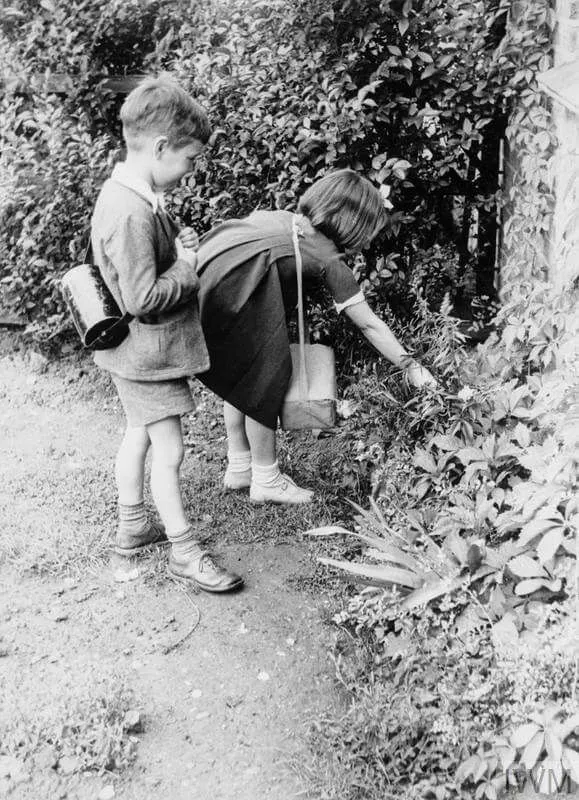
Image © Imperial War Museum
The gas mask was made out of rubber. Some had one transparent panel to see through, others had two 'eye-holes'. All of them had a filter over the mouth area, which filtered out the gas. The gas mask was pulled over the head and the straps tightened. The rubber did not smell nice and made some people feel ill.
When you blew out, the mask would pull away from the face. Children soon discovered that it made a rude noise when you did that!
There were Mickey Mouse masks for small children, with red panels, and babies' gas masks, which looked like a giant hood that went right over them. There was a see-through panel for their face, and the mum was required to first put the mask on and then pump air into the baby's mask with a bellows.
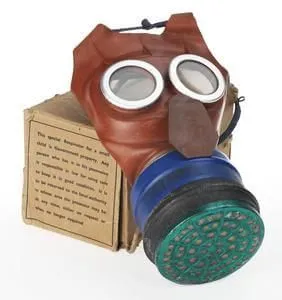
Image © Imperial War Museum
Everyone had to carry their gas mask at all times, in a cardboard box with a long string strap over your shoulder. You could be fined if you were caught without your gas mask, and made to pay for a new one if you lost it! Posters were put up reminding the public to carry their mask, and how to put it on in case of an attack. The government advised everyone to put on their gas mask for 15 minutes each day so that they got used to it.
If you turned up at school without your mask, the teacher would send you back home to fetch it, and even some shops refused admission to customers caught without their gas masks. Schools held regular gas attack drills, a bit like a fire drill.
Air Wardens, who made sure everyone got to air raid shelters in case of bombing raids and ensured that people's homes did not show lights at nighttime (which could help enemy bombers identify towns in the dark) had a special rattle to warn of a gas attack. It looked like an old-fashioned wooden football rattle.
However, the gas masks ended up killing more people than they saved! The filter of a gas mask was made from asbestos, and sadly local GPs around Blackburn recorded abnormally high numbers of cancer deaths of workers from the gas mask factories.
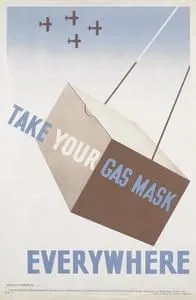
Image © Imperial War Museum
Get your kids to think around the subject by asking these questions:
Imagine what it was like to wear the gas mask. How do you think it would make you feel?
How would you help a younger sibling or friend who was scared of the masks?
How do you think the 38 million masks got to every person in Britain?
How would you remember to take your gas mask out with you every day?
Read The Disclaimer
At Kidadl we pride ourselves on offering families original ideas to make the most of time spent together at home or out and about, wherever you are in the world. We strive to recommend the very best things that are suggested by our community and are things we would do ourselves - our aim is to be the trusted friend to parents.
We try our very best, but cannot guarantee perfection. We will always aim to give you accurate information at the date of publication - however, information does change, so it’s important you do your own research, double-check and make the decision that is right for your family.
Kidadl provides inspiration to entertain and educate your children. We recognise that not all activities and ideas are appropriate and suitable for all children and families or in all circumstances. Our recommended activities are based on age but these are a guide. We recommend that these ideas are used as inspiration, that ideas are undertaken with appropriate adult supervision, and that each adult uses their own discretion and knowledge of their children to consider the safety and suitability.
Kidadl cannot accept liability for the execution of these ideas, and parental supervision is advised at all times, as safety is paramount. Anyone using the information provided by Kidadl does so at their own risk and we can not accept liability if things go wrong.
Kidadl is independent and to make our service free to you the reader we are supported by advertising.
We hope you love our recommendations for products and services! What we suggest is selected independently by the Kidadl team. If you purchase using the buy now button we may earn a small commission. This does not influence our choices. Please note: prices are correct and items are available at the time the article was published.
Kidadl has a number of affiliate partners that we work with including Amazon. Please note that Kidadl is a participant in the Amazon Services LLC Associates Program, an affiliate advertising program designed to provide a means for sites to earn advertising fees by advertising and linking to amazon.
We also link to other websites, but are not responsible for their content.
Was this article helpful?

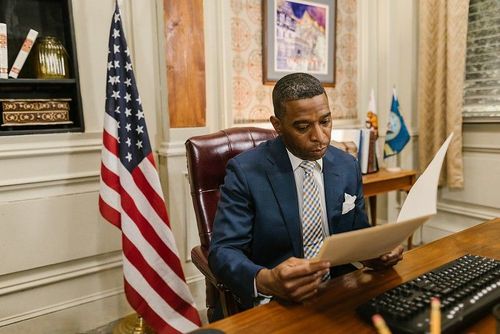
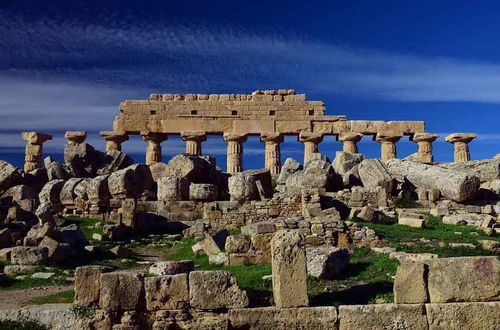
Browse Category



We’ll send you tons of inspiration to help you find a hidden gem in your local area or plan a big day out.



Check your inbox for your latest news from us. You have subscribed to:
Remember that you can always manage your preferences or unsubscribe through the link at the foot of each newsletter.